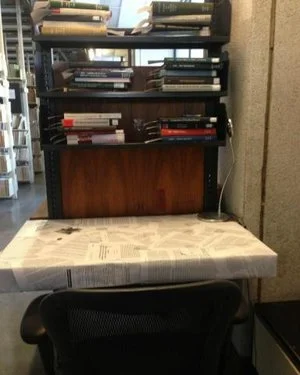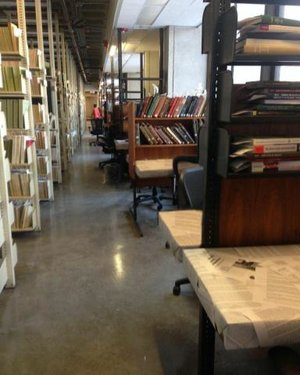Sites & Conditions
Sites & Conditions was my first and only design focused undergraduate course at Brown University.
Course Description: This class will explore the idea of critical spatial practice as related to event, condition, and performance. We'll develop skills of concept-creation, analysis and image-making and point them outside the boxes of traditional cultural production spaces like the gallery or the theater, dealing with both literal and functional or allegorical sites. We’ll conduct small and large experiments in site-based performance, architectural interventions, and creating alternative spatial conditions driven by dynamic ideation, narrative and intent. Redefining limits as liberties, and appropriating asset-based strategies from community development models, this course will investigate visual, devised alternatives to traditional text-initiated performance-making.
Role
Designer
Date
Spring 2015
Projects
Hitchhiking Ideas
Root City
Filtered Chilled Water
Hitchhiking Ideas
Project Guidelines: Pick a parasitic relationship, pick a site, and then manifest that relationship within the site in some sort of intervention.
Proposal: Use of the concrete spaces on a bridge to paint for transporting ideas of common management to the users of the bridge.
Project: This was the final project for the Sites and Conditions course. This project was my first experience creating a 3D model (to scale) to represent my ideas. Phoresy is the transport of one organism by another. In this conceptual project, the host (person) is unaware or is neutral to the fact that it is transporting something, the transportation is vital to the continued life of the organism (ideas from murals), and that the organism leaves the host and the host continues on its way at the end of the transaction. Because my parasitic relationship centered around movement I chose a space where transit is an inherent part of the function of the space. I continued to emphasize that function in my project by not adding anything to the space that would detract from the use of the space as a transitory space, but instead drew strength from the transitory nature (movement of people) for the project to succeed.
Root City
carrel.
noun
1. Also called cubicle, stall. a small recess or enclosed area in a library stack, designed for individual study or reading.
(re. dictionary.com)
carrel. redefined.
noun.
A small desk in the library stacks that becomes the second home for dissertation or thesis writers.
A localized place where words are written and theories are created.
A blank space where new ideas come to live and leave every year.
Project Context
The project instructions were to select a location with which we were familiar and to create a project proposal highlighting the roots of the space.
I spent most of the first half of my senior year at Brown drafting a thesis in a carrel. I happened to be assigned a carrel with no window, and despite rules against decorations, I spent a lot of time attempting to make the space an inviting area. As I wandered around the library, I enjoyed looking at the books in other people’s carrels and wondering what they were writing about.
For this project, while no longer pursuing a thesis, I decided to go back to the space in which I had spent so many hours and examine the ways students could leave a physical mark in the space that had, in turn, affected emotional impacts on them.
Proposal
The surface of each carrel desk is collaged with the work of students who used each individual carrel. Every year a few pages of the student’s work that they used the space of the carrel to create would be collaged onto the desk. The intention is to create an institutional memory of the use of the space within the space itself. The goal is to collage every carrel desk at the Rock, creating a library of work throughout individual desks.
Students at the end of each year would select 3-5 pages from within their thesis or dissertation. The pages could be any: a title page, table of contents, introduction, page 42, conclusion, or works cited. Additionally, each book that is check out to a carrel has a skinny white rectangular piece of paper that is placed in the book with its call number, name, carrel number, and student’s name on it. One to two of these pieces of paper can also be collaged on the desk.
The result is similar to the effect from walking down a row of carrels looking at the books on the shelves. Although one is not able to fully understand the specific argument of the student, it is possible to gain a general idea about the subject from the books. In a similar nature, because only a small random fraction of the total thesis is collaged on the desk, and in a way where not the totality of every page is visible, future users of the desk will only be able to realize a sense of the work.
The project also allows for students to leave a permanent mark on the space in which they spent many hours. Their work is then not only a transient object, but is shifted to a lasting mark on the space they inhabited. Additionally, for younger students using the carrels as places to study in a less permanent nature, the work gives students a glimpse into the future and can serve as possible inspiration.
Filtered Chilled Water
Project Context
As a class we spent 20 minutes in the Blue Room, a central meeting and eating space at Brown University. We were instructed to observe the movement of people and create a project proposal based on our observations.
In class we discussed five ways of examining a public space, drawn from Jan Gehl. Once in the public space, I chose to focus on where people where in relation to the space. First drawing a map of the space and then tracing the movement of people through the space.
Upon later reflection, I realized that besides people’s movement straight through the space, the most visited location in the area was the water fountain. I decided to focus my project proposal on the water fountain, and in particular the words “Filtered Chilled Water.”







